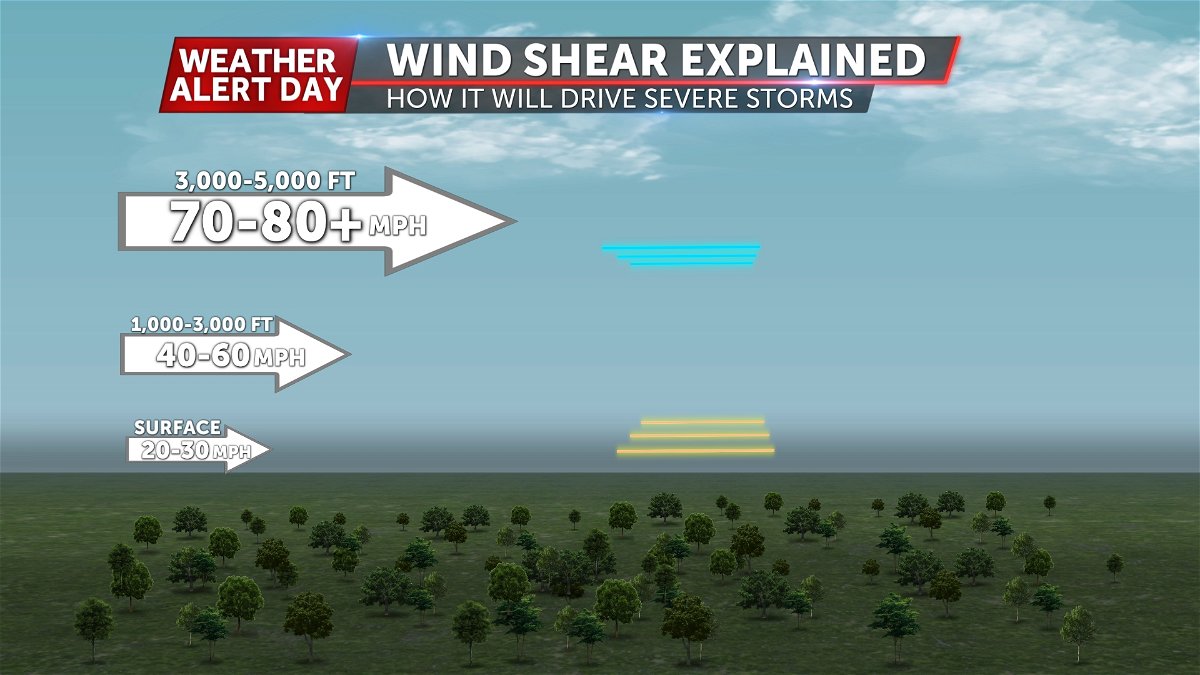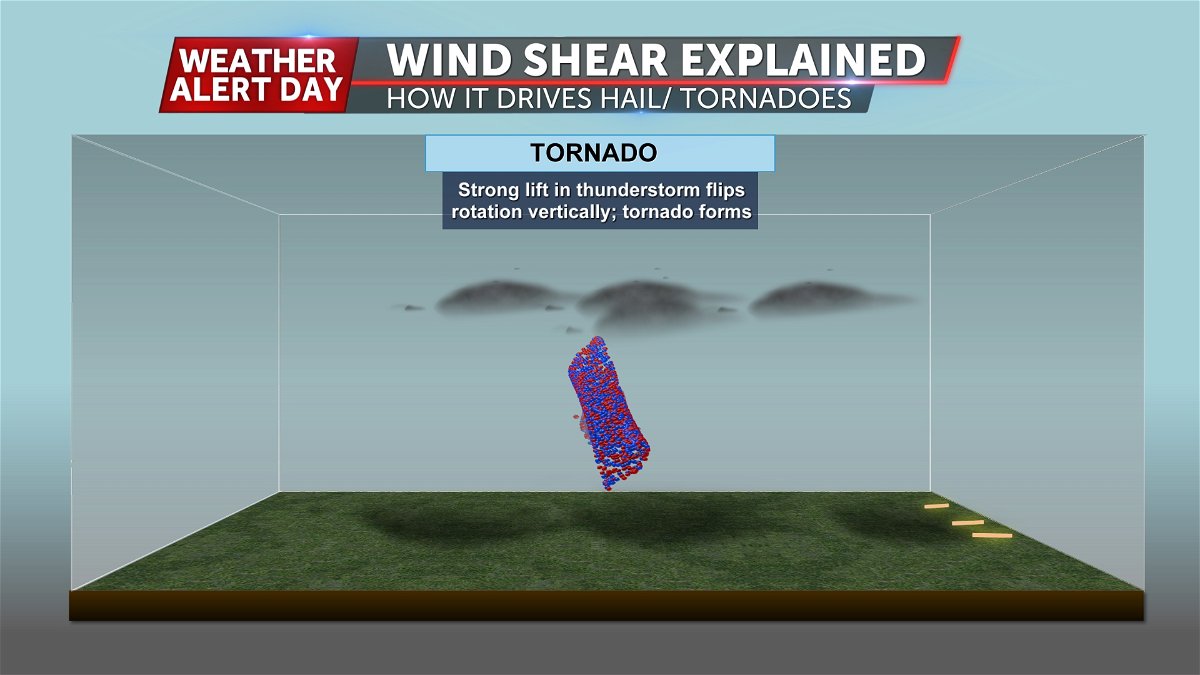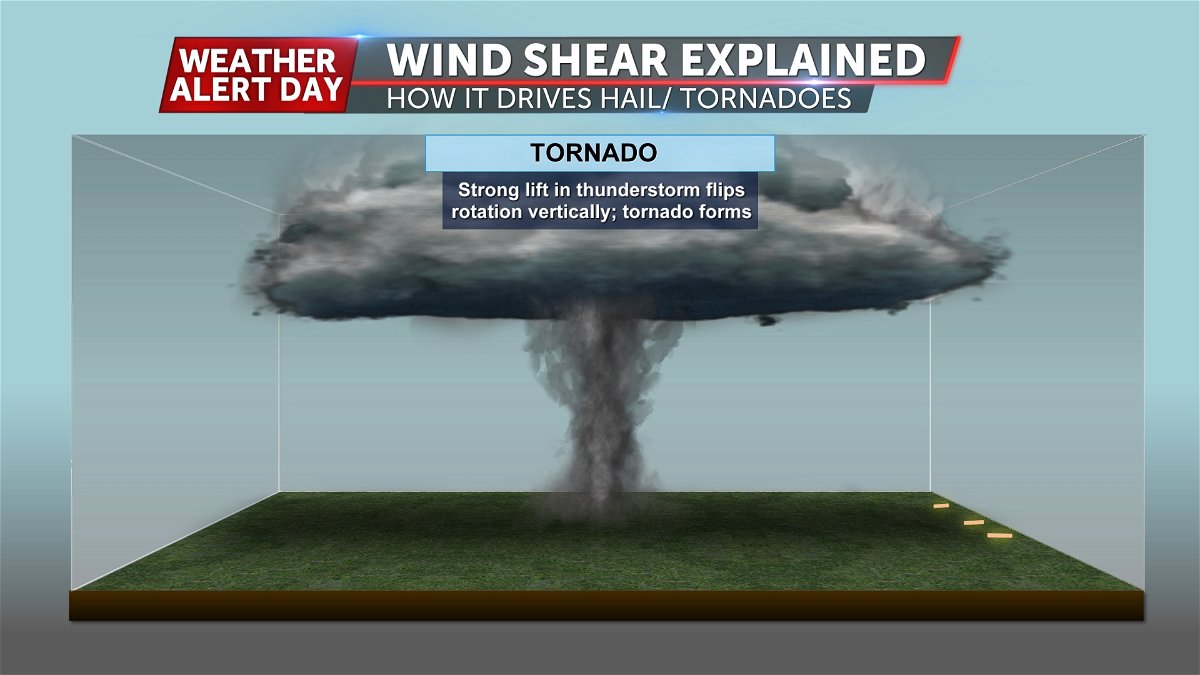Wind shear and how it drives storms
With increased chances of severe storms Thursday afternoon, there are several factors working together that produce severe threats we see in storms such as hail, damaging straight-line winds, and even tornadoes in the worst cases. One of those large factors includes wind shear.

When we talk about wind shear, we break down it into two categories; directional and speed. A change in winds with elevation from the surface into the upper levels of the atmosphere is known as speed shear. The second of the two occurs when we see a change in the wind direction as the elevation changes.

Whenever we see lifting in the atmosphere caused by warmer temperatures at the surface rising, and we mix this with wind shear resulting in vertical wind shear which is the turning motions that results in updrafts. This can drive stronger damaging winds and even hail.

In the worst cases, tornadoes can form as a result of moisture, lifting mechanisms (updraft), and the changing of winds known as wind shear.
